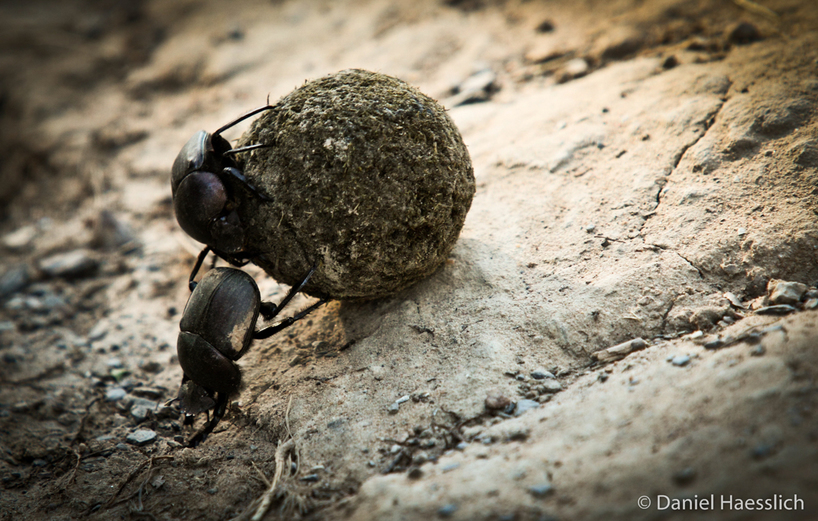Interesting Dung Beetle Facts

Our photo of the week is of a pair of dung beetles on a dung ball captured by ranger Daniel Haesslich.
When thinking about the animals that you would like to see while on an African safari your list probably includes elephants, lions, rhino and giraffes. These are awesome animals and unique and important to the ecosystems that they live in. We bet you didn't think about the little creatures that clean up after these big waste makers!
The dung beetle's name is very fitting as it's life revolves around dung. Dung beetles literally can't live without poop!
Interesting Facts about Dung Beetles
- There are more than 5,000 different species of dung beetle and 800 unique species are found in South Africa alone.
- Dung beetles come in many different shapes, sizes and colours.
- They are the only insect that uses the Milky Way to navigate and orientate themselves.
- Dung beetles or scarabs existed in Ancient Egypt and can be seen in numerous paintings and hieroglyphics.
- Some dung beetles can pull over 1,000 times their own body weight. This is the same as an average person pulling six double-decker buses full of people
- Dung beetles use their dung balls to cool off on really warm days. They will climb on top of the ball to get away from the hot ground.
- Dung beetles feed on herbivore and omnivore dung and might also feed on mushrooms and decaying vegetation and fruit. They don't have to take in fluids as they get this from the food they consume.
- They use their excellent sense of smell to locate fresh dung which they then form into a ball to roll it to a safe place before other beetles come to steal it.
Dung Beetle Life Cycle
Dung beetles have two different types of balls to roll through their lifetime – food balls and brood balls.
A male and female meet up at a pile of dung in breeding season and mate. They make a brood ball out of dung together and move it to the perfect area. The female then lays one egg inside the ball and buries it underground. The pair will make and bury many brood balls and then continue on their way.
The outside layer of the brood ball gets hard underground and creates a protective layer to keep the grub safe. The inside layer stays soft and moist to feed the growing dung beetle grub.
When the grub becomes a beetle through metamorphosis it breaks through the hard outer layer of the ball and flies off to start the life cycle all over again.
Do you know any other interesting facts about dung beetles and their life cycles? Were you fortunate enough to see any dung beetles on your game drives at Kariega Game Reserve? Please use the comments below and share your information and photographs on our Facebook page and via Instagram.









